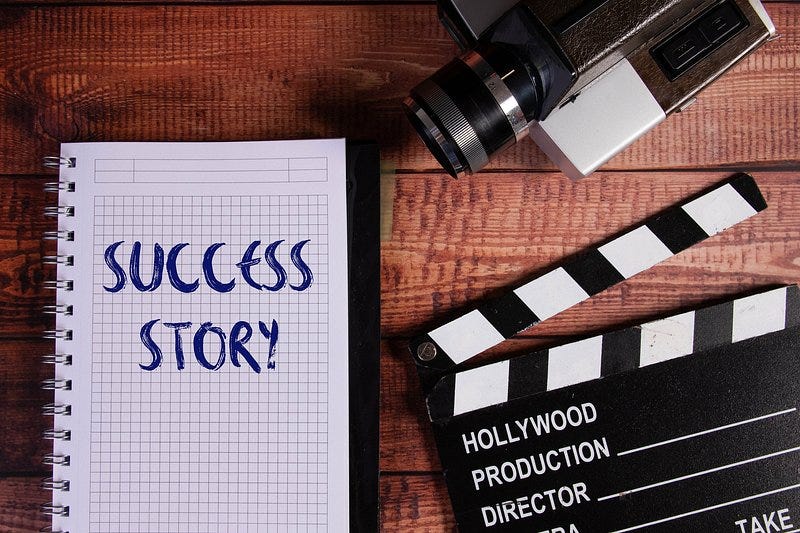
For many, the silver screen offers an unparalleled escape—a darkened room where life’s daily grind fades, replaced by grand narratives and compelling characters. It’s a sanctuary where we can switch off from our own realities for a couple of hours, immersing ourselves in stories crafted to delight, thrill, or provoke. Yet, this communal delight is sometimes shattered by films that, for one reason or another, ignite widespread scorn and fervent criticism, leading to calls for outright boycotts.
From the earliest days of cinema, films have been lightning rods for controversy. As far back as 1906, the Women’s Christian Temperance Union (WCTU) was already staging boycotts of silent movies, claiming they glorified and violence. This historical precedent reminds us that the urge to shun media deemed offensive is as old as the medium itself, driven by a myriad of reasons—be it clashes with religious beliefs, societal values, or outrage over explicit content and production practices.
While the concept of a boycott often conjures images of powerful, unified public action, the reality is frequently more complex, and often, more ironic. In the modern era, the publicity generated by a boycott can inadvertently draw more eyes to a film, a phenomenon colloquially known as “the Streisand effect.” We’re diving into the tumultuous histories of 14 critically acclaimed movies that, despite their artistic merit or commercial success, became targets of intense boycotts, revealing a fascinating interplay between cultural outrage, artistic expression, and market forces.

1. **Mad Max: Fury Road (2015)**When George Miller’s *Mad Max: Fury Road* roared back onto screens in 2015, the cinema world, by and large, celebrated its breathtaking action and visionary storytelling. Starring Tom Hardy as Max Rockatansky and Charlize Theron as the formidable Imperator Furiosa, the film plunged audiences into a resource-scarce post-apocalyptic desert, pitting its heroes against a savage cult leader. Critically lauded and commercially successful, it seemed destined for universal acclaim.
However, not everyone was thrilled. An undeniably idiotic “men’s rights” group vociferously called for a boycott of the film, bizarrely arguing that it served as “feminist propaganda.” Their contention was that the film was cunningly “fooling men into watching it with its intense action sequences.” Their central grievance stemmed from the perceived prominence of Charlize Theron’s character, Imperator Furiosa, in the narrative. They felt she featured “too heavily,” ostensibly reducing Max Rockatansky to a mere “side character,” an utterly ridiculous thing to suggest given the film’s ensemble nature and Furiosa’s undeniable narrative centrality.
This specific, gender-charged boycott, though vocal, ultimately proved to be little more than a whisper in the gale of *Fury Road*’s success. The film was a critical darling, earning multiple Academy Awards and cementing its place as one of the finest action films of the decade. The outrage, rooted in a misguided and misogynistic interpretation of a strong female lead, only served to highlight the absurdity of some boycott movements, proving that even the most fervent online complaints often signify nothing beyond their own self-importance.
Read more about: Unleashed Adrenaline: The 15 Most Iconic Car Chases That Still Electrify Your Screen!
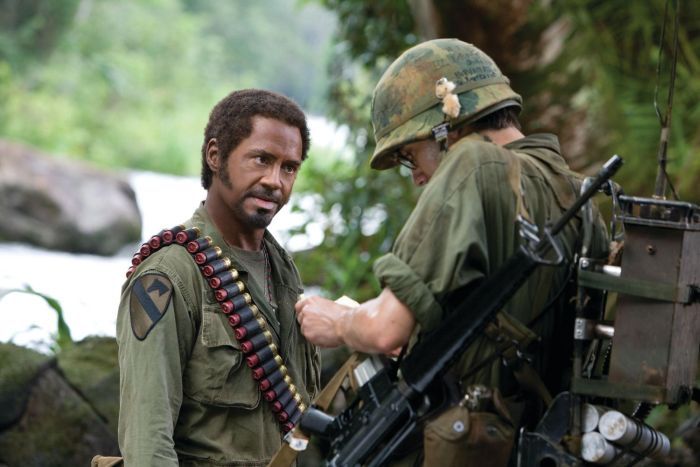
2. **Tropic Thunder (2008)**Ben Stiller’s *Tropic Thunder* was, from its very inception, a film designed to court controversy. A sharp, scathing satire of Hollywood movie productions, it focused on the chaotic making of a Vietnam War film, lampooning everything from method acting to studio excesses. Its ensemble cast, including Robert Downey Jr., Jack Black, and Stiller himself, promised a biting and humorous take on the industry.
Indeed, the film was rife with controversial moments that led to widespread criticism, particularly Robert Downey Jr.’s portrayal of an actor who undergoes “pigmentation alteration” surgery to play a Black character. Downey Jr.’s blackface, predictably and justifiably, was met with significant scorn. However, the most organized and impactful boycott against *Tropic Thunder* arose from a different, yet equally sensitive, issue: the film’s treatment of disabled people.
The specific point of contention was a line delivered by Downey Jr.’s character, who at one point tells another actor never to go “full-Method” when playing a disabled character. Several disability awareness groups coalesced, arguing that the joke came across as “sheer ridicule” of disabled individuals. While some critics, like RogerEbert.com’s Glenn Kenny, later referred to the film as “entirely smug and hateful,” the organized boycott did little to deter audiences. *Tropic Thunder* performed spectacularly at the box office, making $195 million and even landing Downey Jr. an Oscar nomination for his highly contentious performance, demonstrating Hollywood’s complicated relationship with provocative humor.
Read more about: From Brat Pack Rebel to MCU Icon: The 12 Unforgettable Roles That Defined Robert Downey Jr.’s Phenomenal Career
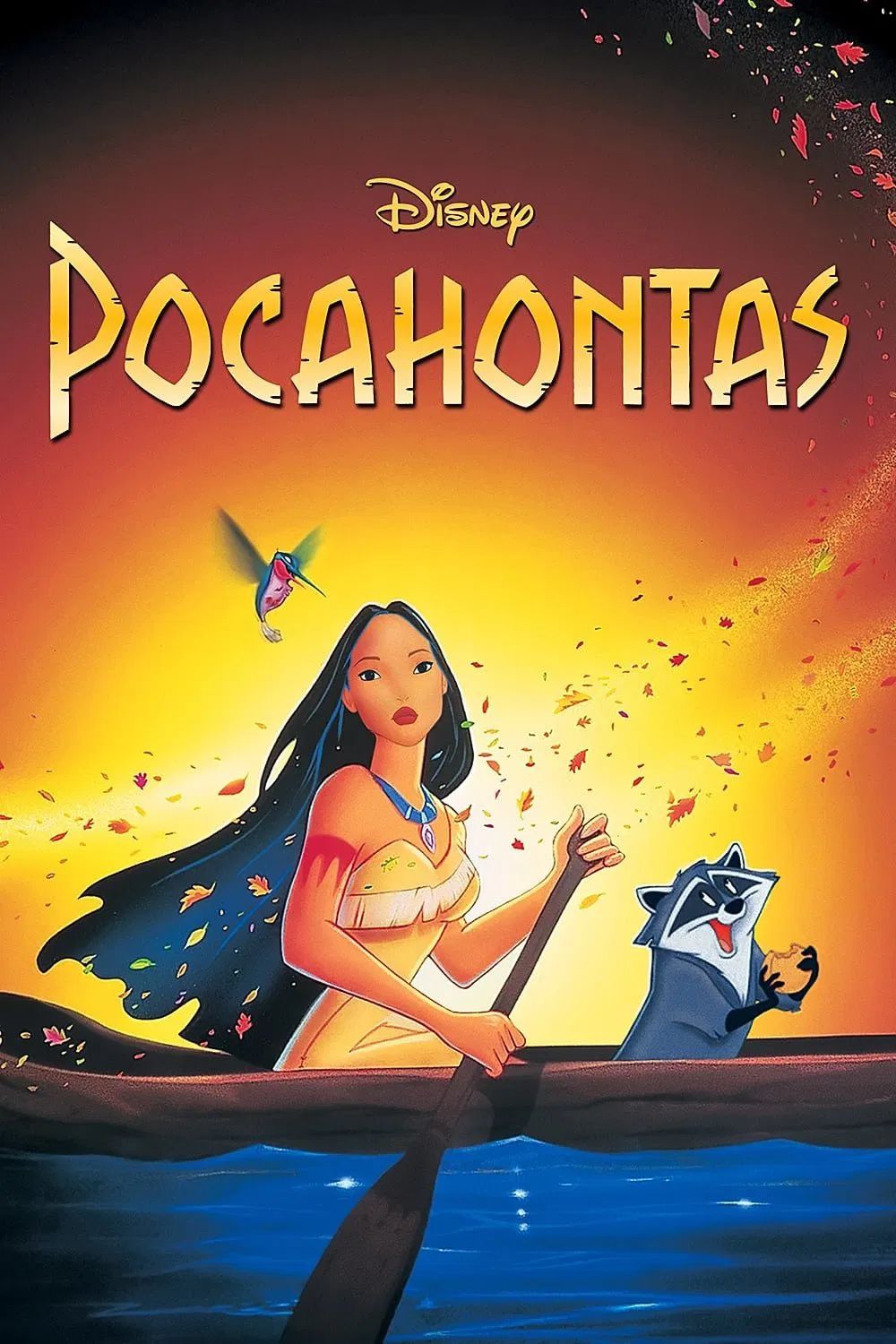
3. **Pocahontas (1995)**Following a golden age of animated musicals in the early 1990s—think *The Little Mermaid*, *Beauty and the Beast*, and *The Lion King*—Disney sought to continue its streak with *Pocahontas*. This film marked an early attempt by the studio to diversify its Disney Princess catalog, adapting the life of the famous Native American heroine, and introducing a fictionalized love story between her and the Englishman John Smith. Its development also coincided with Disney’s plans for an “American History” theme park in Virginia.
However, what Disney intended as a culturally significant expansion of its storytelling empire quickly became a focal point of intense protest. Native American leaders not only called for the disruption of the proposed theme park’s building but also initiated a boycott of the 1995 film itself. Their primary contention was that the movie was “full of historical inaccuracies.” More critically, they argued that its protagonist, Pocahontas, who was a 10-year-old child in reality, was unconscionably reduced to an “underage symbol” on screen, deeply misrepresenting a key historical figure in Native American history.
The boycott efforts, particularly against the theme park, proved successful in halting its development. Yet, the complaints regarding the film itself did not deter the wider movie-going public. *Pocahontas* went on to earn $346 million in theaters worldwide, and its theme song, “Colors of the Wind,” achieved significant recognition, winning an Oscar, a Golden Globe, and a Grammy. This outcome underscores a frequent reality of boycotts: while they can sometimes shift corporate plans, their power to suppress a mainstream film’s commercial success, especially one from a juggernaut like Disney, is often limited.
Read more about: Revisiting The Vault: 10 Disney Movie Sequels That Should Have Never Happened
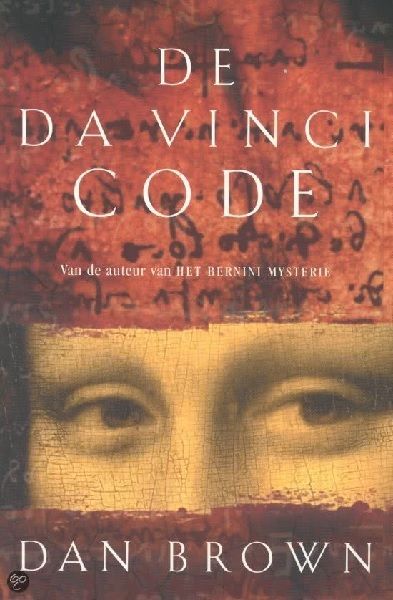
4. **The Da Vinci Code (2006)**Dan Brown’s mystery novel *The Da Vinci Code* was an undeniable global phenomenon, rapidly ascending to bestseller lists worldwide. Its thrilling, conspiracy-laden plot, focusing on a modern search for the Holy Grail and alleging a 2000-year-old cover-up by the Catholic Church concerning Jesus Christ and Mary Magdalene’s marriage and offspring, was ripe for cinematic adaptation. Ron Howard took the directorial reins, with Tom Hanks leading a starry cast that included Ian McKellen and Audrey Tautou.
The novel had already sparked significant controversy, particularly among Catholic groups, and the film adaptation proved to be no less inflammatory. The Catholic Church, naturally, was enraged by what it perceived as a slanderous attack on its foundational beliefs. Vatican official Monsignor Angelo Amato publicly called for a boycott of the film, unequivocally labeling its central premise as “slanderous.” The fervor against the film was intense, with religious leaders around the world denouncing its fictionalized historical claims.
Despite the Church’s widespread calls for shunning, which echoed their earlier complaints about the book, the boycott had remarkably little negative impact on the film’s release. If anything, the controversy likely fueled public curiosity, drawing more viewers eager to see what all the fuss was about. *The Da Vinci Code* wound up taking in a colossal $760 million worldwide in box office receipts, becoming a massive commercial success. This serves as a quintessential example of the Streisand effect, where attempts to suppress a work only magnify its public profile and financial gain.
Read more about: Discover 15 Classic & Thrilling Adventure Films: Treasure Hunts & Lost Worlds

5. **Casino Royale (2006)**Following the departure of Pierce Brosnan from the iconic role of James Bond, the announcement of Daniel Craig as the new 007 for *Casino Royale* in 2006 ignited a firestorm among a particular faction of the franchise’s fanbase. This was to be Craig’s inaugural outing as the famous British double agent, a film that would ultimately revitalize the Bond series and introduce a grittier, more vulnerable iteration of the character. Yet, a specific group of self-proclaimed “true Bond fans” were anything but thrilled.
Their fury, which culminated in a boycott of the film, centered on surprisingly superficial reasons. The most notable grievance? Daniel Craig’s blonde hair. This group, which launched a dedicated website aptly named “danielcraigisnotbond.com,” lambasted the actor for his perceived departure from the traditional dark-haired Bond. They also criticized his “rough face” and his previous acting roles, finding him wholly unsuitable for the suave superspy mantle. The outrage was less about performance or narrative and more about a rigid, almost comical, adherence to perceived physical characteristics.
In hindsight, the boycott efforts appear utterly, delightfully misguided. Despite the initial backlash and the highly vocal opposition, nothing could dissuade Craig himself, who steadfastly delivered a performance that redefined Bond for a new generation. *Casino Royale* ended up being one of the best Bond movies in recent memory, earning widespread critical acclaim and delivering several memorable Bond moments in the succeeding years. The “true Bond fans” eventually had to reckon with the fact that their blonde-haired, rough-faced nemesis had, against all their protestations, become one of the most beloved iterations of 007.
Read more about: Shaken Not Stirred: The Definitive Ranking of the 10 Great James Bond Movies That Defined a Legacy
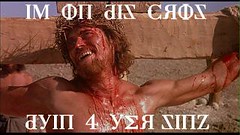
6. **The Last Temptation of Christ (1988)**Martin Scorsese, an auteur whose works often grapple with themes of faith and existential struggle, faced perhaps the most extreme backlash of his career with *The Last Temptation of Christ*. An adaptation of the 1955 novel, the film starred Willem Dafoe as Jesus and explored his human struggles and temptations, including a fantasy sequence depicting him living a normal, married life. Its journey to the screen was fraught from the start.
Initial production efforts in the late 1980s were halted after Christian fundamentalists, without any evidence, expressed worry that the film’s version of Christ would be gay. When production eventually resumed a few years later, renewed calls for a boycott emerged, this time primarily from Southern Protestant priests. They condemned Willem Dafoe’s performance as “deranged” and “overly ualized,” even though most had not screened the film themselves. The hysteria surrounding the film reached a terrifying tipping point when an Integralist Catholic group attempted to blow up a cinema in Paris that was screening the movie, showcasing the intense religious fervor gripping its release.
Critically, the film was largely hailed as one of the great movies of the 20th century, with Roger Ebert famously writing that it “paid Christ the compliment of taking him and his message seriously.” He asserted that it “does not turn him into a garish, emasculated image from a religious postcard.” Yet, unlike many other boycotted films, the public outrage *did* impact its commercial viability. *The Last Temptation of Christ* was hardly a box office smash, taking in only $8 million globally. This remains a rare and sobering instance where a vocal, religiously motivated boycott, tragically escalating to violence, demonstrably curtailed a film’s financial success.
Read more about: The Price of Early Stardom: 12 Child Actors Whose Careers Took a Tumultuous Turn After One Unforgettable Role

7. **Ghostbusters (2016)**The original *Ghostbusters* is a cornerstone of American comedy, a beloved classic that spawned a franchise and cemented its place in pop culture. So, when a reboot of the franchise was announced in 2014, with a fresh twist—a female-led cast including Melissa McCarthy, Kristen Wiig, Kate McKinnon, and Leslie Jones—the internet, and indeed, sections of the audience, absolutely lost its collective mind. Even before filming began, specific individuals were already calling for its metaphorical blood.
Anti-women and anti-feminist groups, along with a vocal contingent of hardcore male fans of the original, coalesced to launch a coordinated campaign of criticism and boycott. Their primary issue was the gender-swapped remake, which they vehemently protested as an affront to their sensibilities and a clear manifestation of a “feminist agenda.” This outrage manifested not only in calls to shun the film but also in a deliberate, widespread effort to litter the film’s online review scores with artificially low ratings, a practice now unfortunately common.
While these openly misogynistic protests were loudly picked up by Men’s Rights Activists, who claimed victory when the film’s opening weekend attendance was merely average, the financial reality tells a different story. *Ghostbusters* (2016) ended up making $229 million worldwide. While this was about $70 million less than the original, it notably surpassed the box office earnings of *Ghostbusters II* (1989) and, more tellingly, the 2021 sequel *Ghostbusters: Afterlife*, which explicitly played into the desires of the MRA crowd by erasing the all-women version from the franchise’s timeline. It’s a compelling case study of how a furious, ideological boycott, despite its volume, often fails to truly sink a film, and sometimes, even helps highlight its underlying cultural significance.
The cultural battlefield of cinema, it turns out, is a vast and endlessly fascinating landscape, often defined by the fierce clashes between artistic expression and public indignation. We’ve seen how specific narratives or creative choices can ignite fervent outrage, but the reasons for boycotts extend far beyond explicit content or perceived ‘agendas.’ Sometimes, the very ethics of a production, the real-world views of its creators, or even the nuanced portrayal of sensitive subjects can become a flashpoint. Let’s delve into another seven films that, despite their artistic merits or mainstream appeal, found themselves squarely in the crosshairs of intense public shunning. These aren’t just stories of protest; they’re case studies in how deeply cinema intersects with our values, our histories, and our collective conscience. This next batch of cinematic lightning rods offers even more intriguing insights into the complex, often unpredictable, dynamics between audiences and the art they consume. You might just find yourself adding a few more titles to your own ‘never watch’ list.
Read more about: A Rollercoaster of Regret: 15 Movies That Only Get More Disappointing
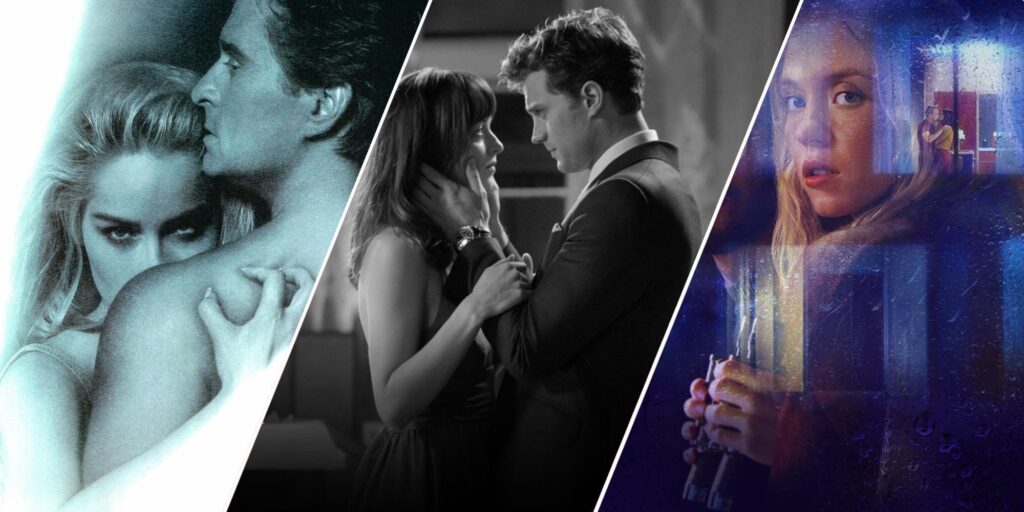
8. **Fifty Shades of Grey (2015)**E.L. James’s erotic novel *Fifty Shades of Grey* was an undeniable cultural phenomenon, thrusting themes of BDSM into mainstream consciousness in a way few works ever had. Its 2015 film adaptation, directed by Sam Taylor-Johnson and starring Dakota Johnson and Jamie Dornan, aimed to translate this steamy, controversial romance to the big screen, depicting a young pair’s foray into a sadomasochistic ual relationship. The anticipation for its release was palpable, yet so too was the apprehension from various, often opposing, corners of public opinion.
Predictably, the film swiftly became a lightning rod for criticism, especially from anti-porn and anti-BDSM groups. These organizations vehemently protested, claiming that the movie’s depictions of were dangerously akin to abuse, conflating consensual BDSM practices with non-consensual violence. Their calls for a boycott were loud and clear, arguing that the film normalized harmful behaviors under the guise of romance and intimacy, thereby potentially endangering viewers or trivializing serious issues of consent.
However, in a fascinating twist of irony, *Fifty Shades of Grey* also managed to irk the very community it ostensibly portrayed. BDSM advocates themselves joined the chorus of boycotters, but for entirely different reasons. They felt the film grossly misrepresented their ual practice, offering a watered-down, cliché-ridden, and often inaccurately depicted version of BDSM that failed to capture its true nuances, emphasis on consent, and diverse expressions. It was a misrepresentation that felt like a betrayal, cheapening a lifestyle they felt was already widely misunderstood.
Ultimately, the film found itself in a rather unenviable position: “a film where no one was left happy,” as one commentator put it, “other than its producers.” Despite the widespread protests from both ends of the spectrum, *Fifty Shades of Grey* was a colossal commercial success, raking in a massive box office worldwide. It proved that sometimes, controversy isn’t a deterrent but a magnet, drawing audiences eager to witness the very content that sparked such fervent outrage, solidifying its place as a cultural touchstone regardless of the critiques.
Read more about: A Rollercoaster of Regret: 15 Movies That Only Get More Disappointing
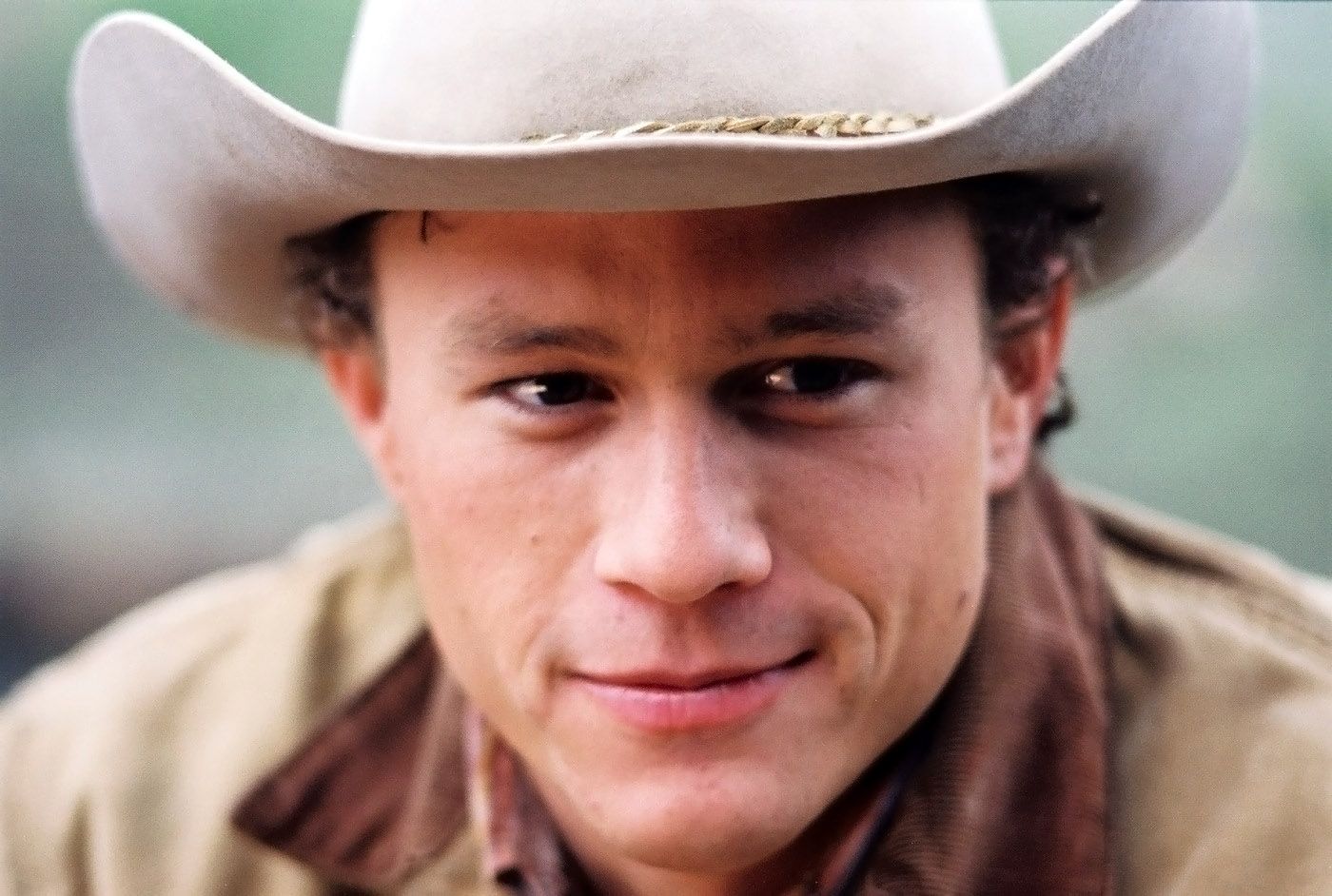
9. **Brokeback Mountain (2005)**Ang Lee’s *Brokeback Mountain*, a neo-Western romantic drama from 2005, dared to explore a troubled, enduring love affair between two American cowboys, played with raw vulnerability by Jake Gyllenhaal and Heath Ledger. The film, set against the breathtaking backdrop of the American West, quickly garnered widespread critical acclaim, lauded for its sensitive portrayal of homouality and its groundbreaking impact on mainstream LGBT cinema. It was a profound, human story that resonated deeply with critics and audiences alike, challenging preconceived notions of masculinity and love.
Yet, the very nature of its narrative—a nuanced celebration of homoual relationships—made it an immediate target for conservative religious groups. Organizations like Focus on the Family and the American Family Association didn’t merely voice their disapproval; they actively boycotted any cinema chain that dared to screen the film because of the way it “celebrated homosexual relationships.” Their protests were rooted in deeply ingrained societal and religious beliefs, asserting that the film promoted values contrary to their understanding of traditional family structures and morality.
Thankfully, in this instance, the fervent protests from these groups did little to diminish the film’s powerful reception. *Brokeback Mountain* sailed past the boycotts, becoming one of the most successful and memorable releases of the 2000s. Its critical accolades were abundant, earning multiple Academy Awards and solidifying its place as a cultural touchstone. The film’s artistic integrity and emotional depth ultimately transcended the noise of the boycotters, proving that powerful storytelling can often overcome even the most organized ideological opposition, leaving a lasting mark on cinematic history.
Read more about: Prepare for Tears: 13 Movie Deaths That Still Emotionally Wreck Us, Decades Later
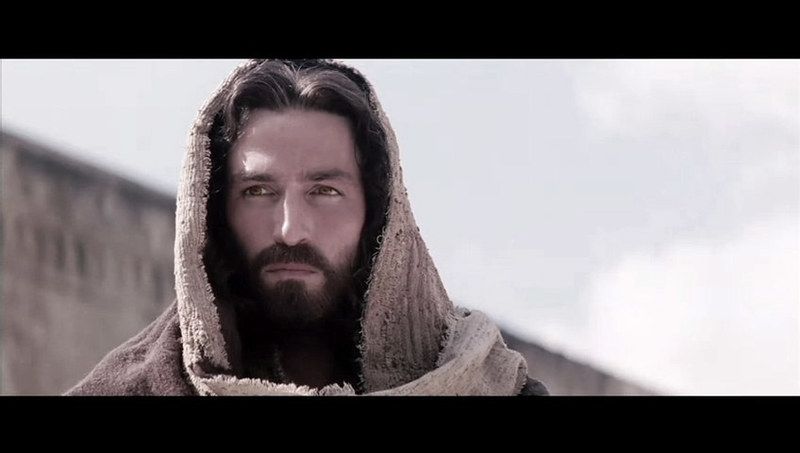
10. **The Passion of the Christ (2004)**Mel Gibson’s 2004 biblical drama, *The Passion of the Christ*, was always destined for controversy, given its intensely graphic focus on the final twelve hours of Jesus Christ’s life. Starring Jim Caviezel as Jesus of Nazareth and Monica Bellucci as Mary Magdalene, the film aimed for a raw, uncompromising depiction of the crucifixion, utilizing Aramaic and Latin dialogues to lend an air of authenticity. It was a cinematic endeavor designed to provoke and immerse viewers in its stark reality, pushing boundaries of biblical narrative on screen.
Before its release, however, and certainly after, the film ignited a furious backlash from various segments of the Jewish community. Many members vehemently boycotted the film, asserting that it was overtly critical of Jewish people and, worse, steeped in anti-Semitic tropes, echoing historical accusations that have long plagued similar biblical narratives. Director Gibson, who was already no stranger to controversy, found himself at the epicenter of accusations of an “anti-Semitic tirade” amidst the film’s promotional cycle.
Beyond the accusations of anti-Semitism, other critics took issue with the film’s historical accuracy, questioning its portrayal of the setting and story. A particularly salient point of contention was the casting of a Caucasian man as Jesus, a figure historically of Middle Eastern descent, leading to claims of “whitewashing.” In response to this torrent of criticism, Gibson adamantly maintained that he had striven to tell a faithful tale while acknowledging that he did take a “handful of creative liberties,” a stance that did little to quell the uproar.
Despite, or perhaps because of, the intense religious and historical debates surrounding it, *The Passion of the Christ* was a monumental box office success. It defied its R-rating and the widespread protests, ultimately grossing over $612 million worldwide on a relatively modest budget. This outcome underscored the potent, often paradoxical, relationship between extreme controversy and commercial triumph, demonstrating that for some films, outrage serves not as a barrier but as a peculiar form of marketing, drawing in curious audiences.
Read more about: Gone Too Soon: The Enduring Legacies of Movie Stars Who Shined Brightly Before Turning 30

11. **The Woman King (2022)***The Woman King* arrived in 2022 as a period action drama with a powerful premise: a cinematic exploration of the Agojie, a real, all-woman warrior unit that fiercely protected the West African kingdom of Dahomey. Set in 1823, the film starred the incomparable Viola Davis as a general tasked with training the next generation of protectors, including a formidable ensemble featuring Lashana Lynch, Sheila Atim, and Thuso Mbedu. It was positioned as a celebration of strength, sisterhood, and forgotten history, seemingly a triumphant narrative waiting to unfold.
However, even before its wide release, the film faced a significant boycott campaign spearheaded by Black activists. Their central grievance revolved around what they perceived as the film’s “fictionalized history” and a “whitewashing” of the grim reality of Dahomey’s involvement in the slave trade. Critics argued that the movie glorified a kingdom that was not only complicit but deeply invested in the institution of slavery, presenting a sanitized version of events that downplayed its historical role in human trafficking and, in doing so, misrepresented a painful historical truth.
The boycott aimed to hold the film accountable for its historical narrative, asserting that entertainment should not gloss over inconvenient truths, particularly concerning such sensitive topics. Yet, despite these vocal protests, the film ultimately had limited impact on its overall reception among mainstream critics and audiences. Critics, for their part, largely lauded *The Woman King*, with the BBC calling it “a splashy popcorn movie with a social conscience.” It achieved a respectable $97 million at the box office, especially notable for an original idea debuting as audiences were cautiously returning to theaters post-pandemic. While the historical debate remains an important part of its legacy, the film successfully carved out its place as a critically appreciated and commercially viable cinematic effort.
Read more about: Beyond the Charts: Inside Beyoncé’s Houston Studio and the 2 Billion-Dollar Enterprise Controlling Her Narrative

12. **Ender’s Game (2013)**In the wake of the sci-fi/fantasy boom ignited by television hits like *Game of Thrones*, studios scrambled to adapt beloved literary classics for the big screen. Among them was Orson Scott Card’s 1985 novel, *Ender’s Game*, which found its cinematic realization in 2013, starring Asa Butterfield as the prodigious young strategist Andrew “Ender” Wiggin. The film promised a thrilling exploration of military strategy and moral quandaries in a futuristic, interstellar war, poised to capture the imaginations of a new generation of sci-fi fans.
However, the film’s journey to theaters was plagued by a controversy that had nothing to do with its special effects, acting, or faithfulness to the source material. By the time of the adaptation, author Orson Scott Card was arguably more infamous for his outspoken anti-marriage equality stance than for his literary achievements. This ignited a passionate boycott campaign from LGBTQ+ groups, who urged audiences to shun the film to avoid financially benefiting Card, who had publicly supported anti-gay causes, asserting that supporting the film meant supporting his discriminatory views.
The boycott was a direct ethical stand, aiming to sever the financial link between a creative work and its creator’s controversial political actions, asserting that consumers should not implicitly endorse bigotry through their entertainment choices. While *Ender’s Game* didn’t exactly set the box office on fire, pulling in just over $125 million, it also didn’t perform particularly well with critics, barely scraping a “fresh” rating on Rotten Tomatoes. Whether the boycott significantly contributed to its lukewarm commercial performance, or if the film’s own artistic merits were simply not compelling enough, remains a point of contention within Hollywood circles.
One thing is certain: despite its box office returns, the film ultimately failed to secure a planned sequel. In Hollywood, where franchise potential is king, a performance that isn’t decisively triumphant, especially one shadowed by public controversy, often signals the end of the line. This serves as a stark reminder that while boycotts might not always sink a film outright, they can certainly dampen its long-term prospects, particularly when coupled with other artistic or commercial shortcomings that leave audiences unimpressed.

13. **Music (2021)**Sia, a powerhouse in the music industry with a string of Grammy nominations to her name, ventured into feature film directing with *Music* in 2021. Boasting a cast including Kate Hudson, Leslie Odom Jr., and frequent collaborator Maddie Ziegler, the film aimed to tell a unique story about a non-verbal autistic teenager navigating the world under the care of her half-sister. Unfortunately, what was intended as an artistic debut quickly devolved into a maelstrom of controversy, becoming a textbook example of how not to handle sensitive subject matter.
The outrage began almost immediately after the first trailer dropped, emanating powerfully from the autistic community. Their primary objections were twofold: the controversial casting of Maddie Ziegler, a neurotypical actress, in the titular role of an autistic character, and the film’s perceived reliance on false, stereotypical, and potentially harmful depictions of individuals with autism spectrum disorder. Activists argued that the film failed to authentically represent the community, instead falling back on damaging clichés and harmful generalizations.
Adding fuel to the already raging fire, Sia herself became a significant part of the problem. Her defensive tweets directed at autistic activists, rather than diffusing the situation, only served to intensify the backlash. This direct engagement with critics, marked by what many perceived as dismissive and arrogant responses, further alienated a community that was already deeply offended by the film’s creative choices and portrayal of their experiences, demonstrating a profound disconnect between creator and audience.
*Music*’s reception was, to put it mildly, brutal. Beyond the vocal boycott and scathing criticism, the film also had the misfortune of arriving in theaters in February 2021, a period when audiences were still largely hesitant to return en masse due to the pandemic. Yet, even accounting for these external factors, its theatrical numbers were dismal, barely crawling past $645,000 globally. This makes *Music* a sobering case study where a boycott, combined with a significant lack of critical and public goodwill, effectively contributed to a spectacular financial and reputational failure, proving that some controversies can indeed sink a ship.
Read more about: Beyond the Headlines: Britney Spears’ Memoir Unveils Decades of Hidden Pacts and Profound Revelations
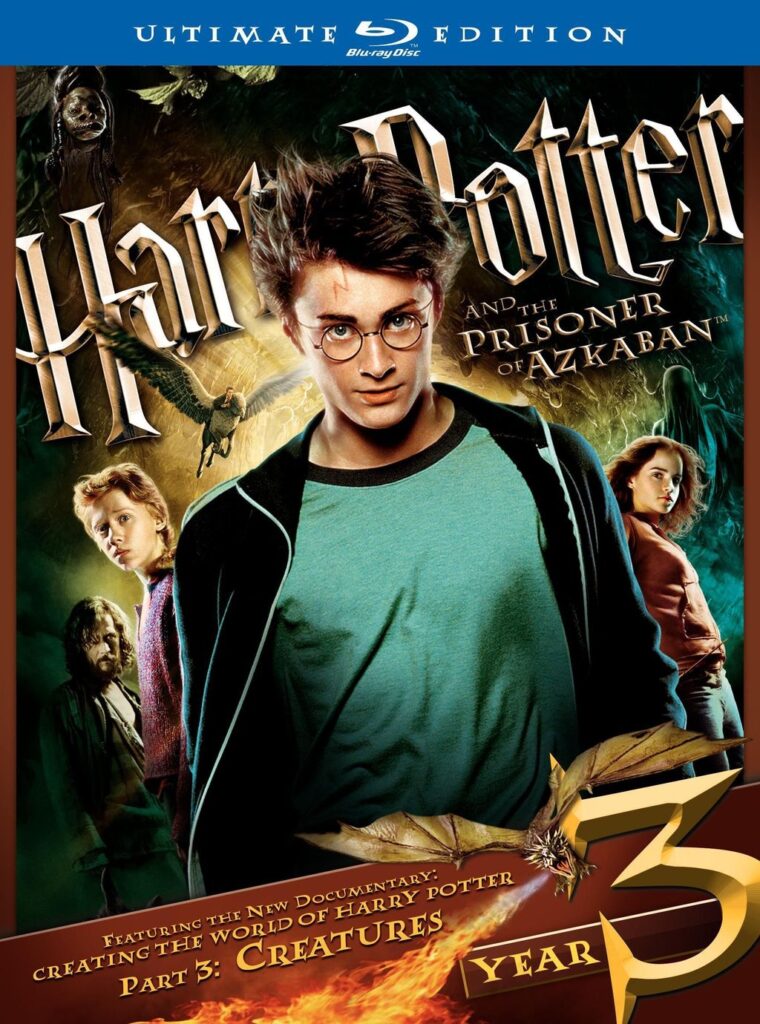
14. **Harry Potter franchise (2001-11)**The *Harry Potter* series transcended mere books and films to become a global cultural phenomenon, captivating generations with its enchanting world of witchcraft and wizardry. From the moment J.K. Rowling’s first book was published, it spawned a literary empire, followed by a decade-long, wildly successful film franchise that introduced millions to the adventures of Harry, Hermione, and Ron at Hogwarts. It was, and remains, a beloved cornerstone of modern fantasy, a narrative juggernaut that reshaped popular culture.
However, from its earliest days, the franchise became an enduring target for various religious groups, particularly Christian fundamentalists. They took extreme issue with the books’ and films’ apparent themes of “occult and satanic magic,” expressing profound worry that the adventures would lead children down a dark path of sorcery and witchcraft. This moral panic manifested in widespread calls for boycotts and bans, not just of the books but of anything associated with the burgeoning Wizarding World, from merchandise to theme park attractions.
This particular boycott is, by far, one of the longest-running and most consistent on record, spanning the entire run of the book series and its subsequent film adaptations. The calls to shun the franchise were loud and persistent, attempting to dissuade families from engaging with what they viewed as dangerous content. The fervor was often rooted in deeply held beliefs about spiritual warfare and the corrupting influence of media that deviated from strict religious doctrines, seeing it as a direct threat to the moral fabric of society.
Despite the vocal and sustained efforts of these religious groups, the boycott of the *Harry Potter* franchise was, by any measure, an an abject failure in terms of its intended impact. The books shattered sales records, and the films grossed billions worldwide, becoming one of the highest-earning cinematic sagas in history. This monumental success serves as a powerful testament to the Streisand effect, where attempts to suppress popular culture only amplify its reach and appeal, proving that not even the most persistent moral outrage can always stand in the way of a cultural juggernaut’s unstoppable momentum.
The complex narrative of movie boycotts is far from a simple morality play. As our journey through these 14 critically acclaimed, yet fiercely opposed, films reveals, the reasons for public outrage are as diverse as human beliefs themselves—ranging from genuine social justice concerns to comically misplaced grievances. What remains consistently clear, however, is the often-paradoxical nature of these movements. While a vocal protest can certainly shift a film’s narrative, sparking crucial conversations and occasionally impacting its bottom line, more often than not, the publicity generated by a boycott inadvertently ensures a film’s enduring presence, cementing its place in the very cultural conversation it sought to escape. In the grand, dazzling spectacle of cinema, it seems even the most furious objections can sometimes become just another act in the show, adding layers of intrigue to the very works they tried to erase.


